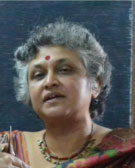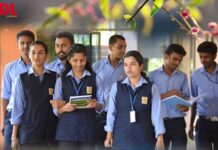

The case study presents a sample project for middle school students, through which their critical thinking as well as creative thinking will be developed simultaneously. In carrying out the project the students will be compelled to think logically and laterally – both at the same time. They will make their own discoveries through open ended experiments and they will apply their discoveries in a crafts workshop to create working models or pieces of installation art. The sample project is based on Archimedes Principle and can be adapted for classes VI, VII or VIII
By Subha Das Mollick, Secretary, Bichitra Pathshala
editorial@elets.in
Science, in conjunction with mathematics, is considered to be intellectually most challenging and therefore pedagogically most demanding. When NCERT first began developing text books, their prime focus was on science books – books that would generate a true understanding of the principles of science and challenge the critical thinking of the student. A science student is expected to have a logical bend of mind and a heightened analytical ability along with willingness to put in hours of hard work.
On the other hand, art education comes low down in the priority list in an academic curriculum. In most cases, there is no curriculum for the arts – that is, the fine arts and the performing arts. In some progressive schools, special slots are created in the academic calendar for art programmes, but art is not considered to be an essential component in a child’s education. There are no seminars or conferences on how best to teach art or the contribution of art in a child’s mental make up. Art classes are taken as classes for relaxation – breathing spaces in an otherwise watertight time table.
Can we conceive something different from this existing scenario? Can the hands on experimentations in science begin in lower classes? Can the excitement of discovery be brought back into the learning of science? A unique workshop called Initiating Responses tried to address some of these questions.
A workshop with one foot in science and the other in arts
To spark off creative thinking among the participants, a film called “How Things Work” was screened. The film was a breathtaking depiction of a trajectory of chain reactions – a tire rolled because a sack hit it, the table upturned because the tire hit it, the water fell because the table upturned, the reaction started because the water fell, the fire was lit because a reaction was sparked off and on and on and on.
 The children worked in five groups. In each group two young artists guided the activities of the children. Every project conceived and executed at this workshop was an exploration of a set of scientific principles towards an aesthetic end. There was a playful subversion at work in every project, which the participants developed in right earnest. The participants were not under pressure to create something useful or to prove a foregone conclusion all over again. They did not know what would emerge at the end of five days. The five groups worked on five different ideas. One group devised a TV that ran by the power of a bicycle, another group made installation art with shimmering curtains that slowly turned in the convection currents rising from the flames, a third group made rockets in their project, ‘Finding Out God’ and yet another group made bizarre musical instruments that gave out cacophonic noise. On the evening of the fifth day, the works of the children were exhibited in an open studio. The children performed, sang and shouted to entice the visitors into their activity.
The children worked in five groups. In each group two young artists guided the activities of the children. Every project conceived and executed at this workshop was an exploration of a set of scientific principles towards an aesthetic end. There was a playful subversion at work in every project, which the participants developed in right earnest. The participants were not under pressure to create something useful or to prove a foregone conclusion all over again. They did not know what would emerge at the end of five days. The five groups worked on five different ideas. One group devised a TV that ran by the power of a bicycle, another group made installation art with shimmering curtains that slowly turned in the convection currents rising from the flames, a third group made rockets in their project, ‘Finding Out God’ and yet another group made bizarre musical instruments that gave out cacophonic noise. On the evening of the fifth day, the works of the children were exhibited in an open studio. The children performed, sang and shouted to entice the visitors into their activity.
Role of film clippings
Appropriately selected film clippings can work wonders in opening the minds of the children. At a workshop on simple machines taken by this author, a clipping from Home Alone was shown to drive home the point that we become inventive when driven against the wall. After this, the children were asked to shortlist some problems in their daily life and find solutions to these problems using simple machines. The children came up with drawings of very interesting perfectly workable contraptions.
Executing the integration: A proposed project
Recommended template for integrating arts and science in middle school curriculum
Interested schools can select two topics from the existing science curriculum – one for each semester, to experiment with the integration of arts and science. One such chosen topic may be ‘Archimedes Principle.’ ‘Archimedes Principle’ offers diverse possibilities of conducting easy to do and safe experiments with simple household objects, throwaway material and junk. The experiments can be designed for different levels of students from class VI to class VIII.
Plans for carrying out an exciting project on ‘Archimedes Principle’
Session 1: Triggering curiosity and imagination
A sure shot way of triggering excitement on the topic is to show an appropriate movie clipping and generate a discussion. A movie clipping that can work very well to introduce Archimedes Principle, is the animation film.
Once the basic concept is mooted in the minds of the students and their curiosity is aroused, one can come down to doing some quantitative tests and establish the principle on the firm ground of observation and experimentation.
The fundamental experiment to demonstrate Archimedes Principle is by measuring the volume of overflowing water when different objects are floated in a jar filled upto the brim. One has to devise a simple mechanism to collect the overflowing water neatly into a beaker, without spilling any water. Through this demonstration the children will find that the volume of water displaced by all floating objects is exactly equal to their weight. This will help the children to arrive at ‘Archimedes Principle.’ They can further verify the principle by taking regular solids like cubes or cuboids or spheres and cylinders made of metals and measuring their loss of weight when fully immersed (using a spring balance). The loss of weight will turn out to be exactly equal to the volumes of the solids.
Appropriately selected film clippings can work wonders in opening the minds of the children
Session 2: Trying out hands on
Next day, the children may be taken to a workshop where they will perform freewheeling experiments on Archimedes Principle and come up with their own findings. Objects like small plastic caps, small metallic caps, nails and pins, pieces of thermocol and cork, aluminium foils, tubs of water, pipes and droppers, simple balances, paper to make paper boats, boxes of plasticine etc can be given to them so that they can conduct their own experiments and arrive at their own conclusions.
Open ended experiments based on the same principle
For a class of 30 students, six corners may be created in the craft room. Each corner will be given a name and will have one set of objects. Each corner will be made equally colourful and attractive. In each corner a set of questions will be kept to guide the thinking and activities of the students. The question may even be embedded in a story displayed in some of the corners. This will give a direction to the students’ exploration and guide them towards making accurate scientific observations.
 Students will realize the basic values of good science – the need for accurate observations, of developing a rigorous method and the importance of replicability of experiments
Students will realize the basic values of good science – the need for accurate observations, of developing a rigorous method and the importance of replicability of experiments
Learning the methods of science
At least two students in each group will be asked to note down the observations meticulously. A class like this should be at least two periods long. The second period may be spent in sharing the discoveries of the six groups. Each group will give a presentation cum demonstration of their findings and the method they followed in arriving at their finding. The teachers – both the science teacher and the craft teacher will listen carefully to the presentations and ask specific questions.
Through this exercise the students will realize the basic values of good science – the need for accurate observations, of developing a rigorous method and the importance of replicability of experiments to arrive at the same results every time. Thus, instead of making all the students mechanically do a pre given experiment with known results, each group is encouraged to devise its own experiment and arrive at its own result.
Keeping meticulous records
All the experiments and their results will be recorded with the accompaniment of colourful drawings, graphics, photographs taken with simple digital cameras and archived. One member in each group may be asked to do the photo documentation. He/she should keep a photographic record of every step of the group?s experiment. However, at least a week has to be given for writing the record. In the subsequent years, the experiments conducted may be slightly different, yielding a different set of results.
Session 3: Probing deeper
Drawings of these experiments can be drawn on the board and the students can be asked to guess the results by applying their already acquired knowledge. Some of the thought experiments may be designed with the Archimedes sphere, some may be designed with melting ice and some others may be designed with ships and boats. If time permits, one may do some thought experiments and calculations with hot air balloons and gas balloons too. This will bring them back to the discussion on UP that they had in session 1.
Session 4: The real fun begins now
In the second craft class, the students may once again work in groups and design floating sculpture using throwaway objects like empty plastic bottles, glass bottles, wires and rods, pipes, plastic bags, aluminium foils and anything they can lay their hands on. Each group’s sculpture should be unique. The groups may not finish the sculpture in one double period, they may take upto three periods to finish and embellish their respective sculpture
Session 5: An open invitation to all
All the hard work, brainstorming, failures and ultimate successes will be eventually displayed in a grand exhibition in the final session of the project. Every sculpture will be given a name and the names of the group members will be displayed beside every masterpiece. Each masterpiece will be a testimony of how objects of everyday use can be used to create works of art.
Author

Subha Daas Mallick
Subha Das Mollick is presently the Secretary of Bichitra Pathshala-an organisation that promotes the use of movies and media as pedagogical tools






















